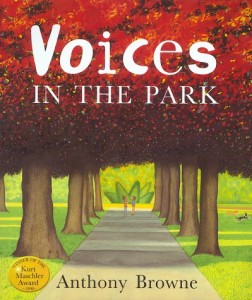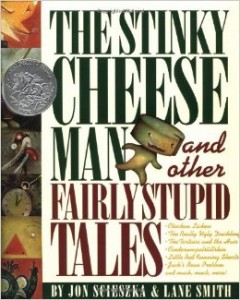 The first assignment for ETL402 – a rationale for school/library fiction collections in the form of a journal article – was a significant challenge… huge! Sure it was the time frame – getting the learning modules completed at the end of the year spent in a new school, juggling both the Teacher Librarian and Computer Coordinator roles, planning for Christmas… stress and exhaustion had taken its toll… but it was much more than these factors that pushed down on getting this assignment finished and submitted. This assignment resolved itself into a difficult question – how well do you know your Picturebook Collection and does it have a place in a high school library? To be honest I ended up spending more time on that question than the assignment.
The first assignment for ETL402 – a rationale for school/library fiction collections in the form of a journal article – was a significant challenge… huge! Sure it was the time frame – getting the learning modules completed at the end of the year spent in a new school, juggling both the Teacher Librarian and Computer Coordinator roles, planning for Christmas… stress and exhaustion had taken its toll… but it was much more than these factors that pushed down on getting this assignment finished and submitted. This assignment resolved itself into a difficult question – how well do you know your Picturebook Collection and does it have a place in a high school library? To be honest I ended up spending more time on that question than the assignment.
In the three years of being in school libraries, I must admit I have developed a bit of a soft spot where the Picturebooks are concerned. I’d found myself falling in love with these books, their authors and illustrators, and wishing hard that high school teachers would make more use of them in their classrooms – so they seemed the obvious choice for this assignment.
This might sound strange to all those who dismiss the Picturebook format as something that should be confined to the early childhood reading experience, but in the last three years I had come to realise how much the titles in this format had expanded beyond early readers and how many of these books were pitched at the middle school and young adult market… and how inviting these books were to me as a reader.
Therefore, this assignment became an opportunity to explore this section of our school library collection and wrestle with what was there… and what wasn’t there… as we make plans for the new school year and allocate budget to potential purchases. This assignment also saw me off on many sidetrack adventures as I explored the significant contributions of particular authors and illustrators, and researched the breadth and depths of their individual bodies of work in this format. I found myself coming face to face with amazingly beautiful as well as dreadfully scary images that inhabit these books and a developing appreciation for the skill required to write, draw and produce these titles.
In particular I was down rabbit holes with Gary Crew, Margaret Wild and Anthony Browne …and then the amazing range of books designated as “sophisticated”.
The counterpoint between text and image led me to explore two particularly interesting features of many post-modern picturebooks – metafiction and intertextuality.
Metafiction
The notion of destroying the illusion of a “reality” and substituting an emphasis on the book’s “fictionality” (Nikolajeva & Scott, 2006) is a feature that can lead to all manner of creativity in student writing. An excellent example of these books are those of Jon Scieszka http://www.jsworldwide.com/ . The best known of Scieszka’s books, The Stinky Cheese Man and Other Fairly Stupid Tales (1992), illustrated by Lane Smith, explores a metanarrative – the narrator appears in both the pictures and as one of the characters in the story, providing a running commentary.
Intertextuality
Intertextuality refers to the incorporation of all kinds of links between two or more texts utilising tools like parody, irony, literary and extra-literary allusions, direct quotations or indirect references to previous texts, fracturing of well-known patterns, and so on. Intertextuality assumes the reader’s active participation in the process of decoding the text when reading. It is the reader who makes the intertextual connections. In particular, this led me to explore picturebooks from different cultures and the opportunities that they provide to learn about cultural differences exposed in these texts.
The picturebook format certainly has a lot to offer the high school classroom teacher – hopefully I have built a sufficiently strong argument to that effect in Assignment 1.
Reference:
Nikolajeva, & Scott, C. (2006) How picturebooks work. New York : Taylor and Francis
